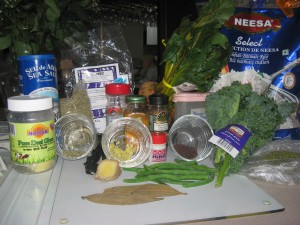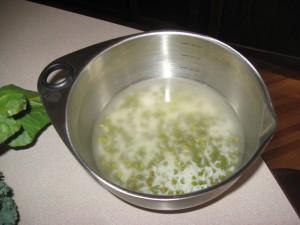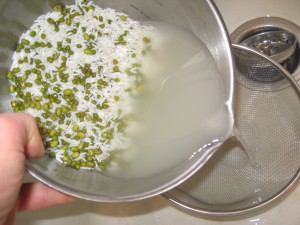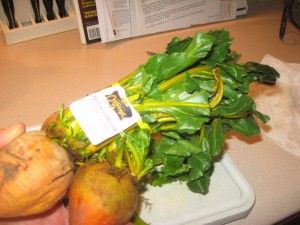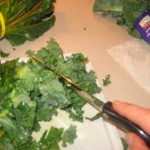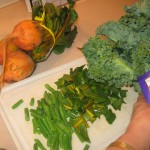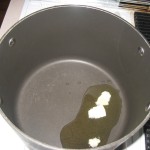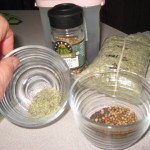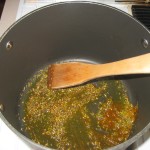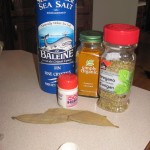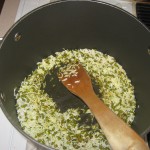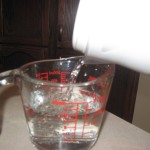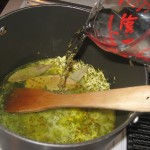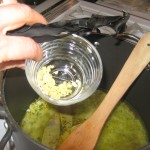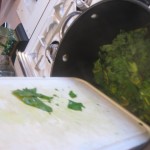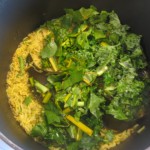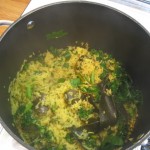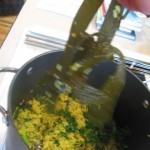Cleanses at this time of year are all the rage.
And I am in favour of a internal bodily cleanse four times a year.
But simply getting an expensive box of herbs from a health food store and taking them for a week or two without making other changes to your lifestyle is of questionable value.
Our livers and kidneys, not to mention intestines, lymph glands, and skin are all part of our elimination network . When we do not change our diet or daily routines to minimize the load on them when taking purgative herbs, we tend to stress these organs even more.
Ayurvedic medicine, the traditional medicine of India, and sister art and science to yoga, recommends when cleansing a diet that is nutritionally complete yet incredibly easy to digest.
Kitchari, a seasoned dish made from mung beans and basmati rice, is a complete food that fulfills all these requirements. One might start an elimination diet by eating kitchari exclusively, as it tends to not include any typical allergens. Don’t let the long list of ingredients, some of which might be unfamiliar, or the green colour, scare you or put you off. I have come to love this traditional Indian dish that often is fed to invalids because it is so nourishing and easy to eat.
Here are some instructions for making kitchari that I have adapted from Dr. Scott Blossom and The Yoga Journal.
KITCHARI – 3 cups
1 cup basmati rice
1/2 cup organic whole mung beans (soak for at least three hours, or overnight)
4 cups purified water
2 tablespoons ghee (clarified butter) or sunflower or olive oil
1 teaspoon black or brown mustard seed
1 teaspoon cumin seed
2 pinches hing (asafetida) (optional. Found in East Indian groceries. Tastes like garlic and makes dish easier to digest.)
1 teaspoon fresh grated or minced ginger
1 stick of kombu or wakame (breaks down indigestible fibres and thickens)
1/2 teaspoon sea salt
1/2 teaspoon tumeric
This is a good recipe for vata dosha. Don’t worry too much about your doshic type as simply eating kitchari is a big move toward supporting your health. If you know your dosha and you are a pitta or kapha, the following can be added at suitable times during the preparation (see method):
Pitta Dosha
1/2 teaspoon dry fennel seed
sliced burdock root (approx 8-in long) or 2 sliced carrots
1 1/2 cups fresh green beans
1 small zucchini, sliced
Kapha Dosha
1 1/2 teaspoons coriander seed
1 1/2 teaspoon oregano
3 bay leaves
2 cups chopped vegetables, including zucchini, leafy greens, green beans
Method
Rinse the rice and the soaked mung means.
Drain.
If using vegetables, cut into cubes
In a pot, warm the ghee or oil over medium-high heat.
Add the mustard and cumin seeds (and, if using, fennel and coriander seed) and saute’ for one to two minutes or until aromatic.
Add tumeric (and, if using, other spices), mung means, and rice.
Then add water, kombu, and ginger.
Bring to a boil then cover and simmer for 40 minutes.
If using vegetables, add starchy ones (burdock or carrot) halfway through the cooking (after 20 minutes). Zucchini and beans should be added after 30 minutes of cooking (10 minutes before kitchari is done).
Greens can be added in the last five minutes. You can add a little more water but the kitchari should be the consistency of stew when done.
I like to remove the bay leaf and kombu from the kitchari. Some people like to eat the kombu as a vegetable.
Garnish with fresh cilantro chutney (and add salt to taste. You can have avocado with a little salt and lemon or steamed vegetables (broccoli, carrots, green beans, asparagus, fennel and summer squashes ) as a side dish.
Eat enough to feel satisfied, about 1 to 1 1/2 cups, and then relax for at least 15 minutes to support good digestion. ENJOY!

